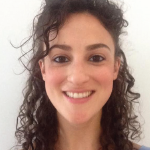Editor’s Note: Each year, through Advocates for Arthritis, the ACR takes more than 100 members and patients to Capitol Hill so they can share their experiences with lawmakers. The ACR held Advocates for Arthritis in March; here is one participant’s story about his experience on The Hill.
Amidst the most momentous week of the year’s tumultuous healthcare reform activities, we arrived in Washington, D.C., for the annual ACR Advocates for Arthritis Capitol Hill Fly-In. This was to be my first visit to Congress. Although my alma mater, Georgetown University, was a short distance from the Capitol dome, as a student I had little interest in the political process—particularly as it related to medicine. Now, however, as a young rheumatologist, I am increasingly aware of the impact health policy has on my daily practice. I have also watched the healthcare reform debate unfold over the last year, recognizing that this is a critical time for physicians to be vocal and active. There is a great deal at stake, and we are surrounded daily by the very issues debated in Washington. Why not take our opinions directly to the decision makers?
The ACR brought together over 120 rheumatologists, rheumatology health professionals, and patients from 35 states to participate in the two-day Capitol Hill Fly-In. Applying for the event was easy (instructions can be found at www.rheumatology.org under the Advocacy tab), and the ACR covered travel expenses.
On the first day, we gathered at the Sheraton National Hotel in Arlington, Va., within view of the Capitol located across the rain-swollen Potomac. The day was devoted to advocacy training and discussion of our five primary legislative priorities:
- Fixing the flawed Sustainable Growth Rate (SGR) formula;
- Reinstating consultation service codes;
- Encouraging co-sponsoring of the Arthritis Prevention Control and Cure Act;
- Ensuring access to osteoporosis testing; and
- Increasing National Institutes of Health (NIH) funding.
Guest speakers included representatives from the NIH and the Department of Health and Human Services and professional consultants. Representatives Shelley Berkley (D-Nev.) and Pete Sessions (R-Texas) both spoke to our assembled group, offering insights into the climate of healthcare legislation and offering tips on how to communicate with senators, representatives, and their staffers.
On the second day of the fly-in, we were grouped into teams by state—I was joined by an experienced team leader and a patient advocate—and we met with legislators and their staff. My team lobbied five representatives and three senators from the states of Georgia and South Carolina. The atmosphere in the Senate and House office buildings was electric, with voting on the healthcare reform bill set to occur later in the week.
The representatives, senators, and their staffs were receptive to our issues and seemed genuinely interested, and we quickly realized the powerful impact we had as healthcare professionals and patients. Our patient advocate recounted the long distances she had to travel to receive care from a rheumatologist for her inflammatory myopathy and expressed concern that the discontinuation of consultation service codes would make access to a rheumatologist even more difficult for others like herself.
After listening to her speak and listening to my colleague discuss the difficulties of providing dual-energy X-ray absorptiometry screening to his patients, I was struck by the thought that this is how government is meant to work. Who better to communicate our concerns and views to Congress than the subject-matter experts—the providers and patients themselves?
We learned to be brief and clear with our points, providing written materials (issue briefs prepared by the ACR) and asking for legislative commitments at the end of each meeting. The work continued after we departed D.C. and arrived back home. We sent follow-up thank-you letters to the legislators and staff members, briefly reiterating the topics discussed—an effective lobbying tactic to keep our issues at the top of their minds.
The fly-in was an inspiring opportunity to represent the concerns and views of the rheumatology community to Congress. It was also a first-rate educational opportunity in the machinations of healthcare policy and legislation. I am convinced that the impact of the face-to-face meetings—strengthened by personal stories about, and professional experiences with, the real-life effects of healthcare policy decisions—exceeds any other form of political advocacy.
In addition to the Advocates for Arthritis Capitol Hill Fly-In, the ACR offers other political advocacy opportunities, many available through its website, www.rheumatology.org. The advocacy list serve is an easy way to keep abreast of issues that affect other rheumatologists and is a great place to ask for advice and share views on practice and specialty-related topics.
Rheumatologists have a unique opportunity to influence the outcome of legislative activities through the Advocates for Arthritis Capitol Hill Fly-In. I enthusiastically recommend the event. With so many healthcare policy decisions on the table, now is the time to maximize engagement in advocacy!
Dr. Edgerton is a rheumatologist at Eisenhower Army Medical Center in Fort Gordon, Ga.
